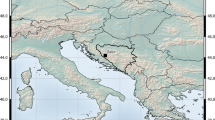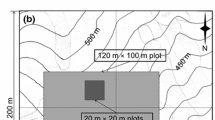Abstract
To understand carbon cycle and flows of forests, accurate information on tree-component-specific litter production of trees is needed. In the ecosystem models, the litterfall of living trees is usually predicted by the biomass component by average amounts corresponding to site conditions or by multiplying the biomass of the growing stock by the component-specific biomass turnover rate. In this study, the rates of needle biomass turnover of Scots pine (Pinus sylvestris L.) were derived from the needle-shed dynamics. When the rates for needle litter production were modelled, the weighting and yellowing effects were taken into account. The annual biomass turnover rates of needles for southern and northern Finland are 0.21 and 0.10, respectively. Species-specific estimation of litter production is essential for understanding the carbon cycle and flows of forests. Biomass turnover rates can provide useful litter production estimates for large areas with average biomass values as a source of data.





Similar content being viewed by others
References
Albrektson A, Andersson B (1978) Skattningar av förnafall i tallbestånd: pilotstudie av en metod. Swedish coniferous forest project. Inst Ecol Environ Res Intern Rep 74:1–13
Albrektson A (1988) Needle litterfall in stands of Pinus sylvestris L. in Sweden, in relation to site quality, stand age and latitude. Scand J For Res 3:333–342
Balster NJ, Marshall JD (2000) Decreased needle longevity of fertilized Douglas-fir and grand fir in the Northern Rockies. Tree Physiol 20:1191–1197
Bender R, Benner A (2000) Calculating ordinal regression models in SAS and S-Plus. Biom J 42:677–699
Bonnevie-Svedsen C, Gjems O (1957) Amount and chemical composition of litter from larch, beech, Norway spruce and Scots pine stands and its effect on the soil. Medd Nor Skogforskves 14:111–174
Bringmark L (1977) A bioelement budget of an old Scots pine forest in central Sweden. Silva Fenn 11:201–209
Cajander AK (1926) The theory of forest types. Acta For Fenn 29:1–108
Falck J (1981) Förändringar av växtnäringmängder i vegetation och humusskikt efter gödsling med urea i ett tallbestånd (Pinus sylvestris L.). Sveriges lantbruksuniversitet, Institutionen för skogsskötsel, Rapport 5:1–253
Finér L (1996) Variation in the amount and quality of litterfall in a Pinus sylvestris L. stand growing on a bog. For Ecol Manage 80:1–11
Fleming RA, Piene H (1992a) Spruce budworm defoliation and growth loss in young balsam fir: cohort models of needlefall schedules for spaced trees. For Sci 38:678–694
Fleming RA, Piene H (1992b) Spruce budworm defoliation and growth loss in young balsam fir: period models of needle survivorship for spaced trees. For Sci 38:287–304
Flower-Ellis JGK, Olsson L (1978) Litterfall in an age series of Scots pine stands and its variation by components during the years 1973-1976. Swedish coniferous forest project. Inst Ecol Environ Res Tech Rep 15:1–62
Flower-Ellis JGK (1985) Litterfall in an age series of Scots pine stands: summary of results for the period 1973–1983. Sveriges lantbruksuniversitet, Institutionen för ekologi och miljövård, Rapport 19:75–94
Huebschmann MM, Lynch TB, Wittwer RF (1999) Needle litterfall prediction models for even-aged natural shortleaf pine (Pinus echinata Mill.) stands. For Ecol Manage 117:179–186
Jalkanen R (1998) Fluctuation in the number of needle sets and needle shed in Pinus sylvestris. Scand J For Res 13:284–291
Korhonen KT, Maltamo M (1990) Männyn maanpäällisten osien kuivamassat Etelä-Suomessa. Metsäntutkimuslaitoksen Tiedonantoja 371:1–29
Kouki J, Hokkanen T (1992) Long-term needle litterfall of a Scots pine Pinus sylvestris stand: relation to temperature factors. Oecologia 89:176–181
Krankina ON 1999 NPP Boreal Forest: Siberian Scots Pine Forests, Russia, 1968–1974. http://www.daac.ornl.gov. 29 July 2003
Lehtonen A, Mäkipää R, Heikkinen J, Sievänen R, Liski J (2004) Biomass expansion factors (BEFs) for Scots pine, Norway spruce and birch according to stand age for boreal forests. For Ecol Manage 188:211–224
Liski J, Perruchoud D, Karjalainen T (2002) Increasing carbon stocks in the forest soils of western Europe. For Ecol Manage 169:159–175
Mälkönen E (1974) Annual primary production and nutrient cycle in some Scots pine stands. Comm Inst For Fenn 84:1–87
Mälkönen E, Derome J, Kukkola M, Saarsalmi A (2000) Improving forest condition by means of slow-release fertilisers. In: Mälkönen E (ed) Forest condition in a changing environment—the Finnish case. Forestry sciences, vol 65. Kluwer, London, pp 301–323
Masera OR, Garza-Caligaris JF, Kanninen M, Karjalainen T, Liski J, Nabuurs GJ, Pussinen A, de Jong BHJ, Mohren GMJ (2003) Modeling carbon sequestration in afforestation, agroforestry and forest management projects: the CO2FIX V.2 approach. Ecol Model 164:177–199
Mork E (1942) Om strøfallet i våre skoger. Medd Nor Skogforskves 29:297–365
Muukkonen P, Lehtonen A (2004) Needle and branch biomass turnover rates of Norway spruce (Picea abies). Can J For Res (in press)
Niinemets Ü, Lukjanova A (2003a) Needle longevity, shoot growth and branching frequency in relation to site fertility and within-canopy light conditions in Pinus sylvestris. Ann For Sci 60:195–208
Niinemets Ü, Lukjanova A (2003b) Total foliar area and average leaf age may be more strongly associated with branching frequency than with leaf longevity in temperate conifers. New Phytol 158:75–89
Nyyssönen A (1954) Metsikön kuutiomäärän arvioiminen relaskoopin avulla. Comm Inst For Fenn 44:1–31
Pedersen LB, Bille-Hansen J (1999) A comparison of litterfall and element fluxes in even aged Norway spruce, sitka spruce and beech stands in Denmark. For Ecol Manage 114:55–70
Pensa M, Jalkanen R (1999) Needle chronologies on Pinus sylvestris in Northern Estonia and Southern Finland. Silva Fenn 33:171–177
Ross J, Kellomäki S, Oker-Blom P, Ross V, Vilikainen L (1986) Architecture of Scots pine crown: phytometrical characteristics of needles and shoots. Silva Fenn 20:91–105
Salemaa M, Jukola-Sulonen E-L, Nieminen T, Nöjd P (1993) Latvatunnukset ja puun kasvu elinvoimaisuuden ilmentäjinä. Metsäntutkimuslaitoksen Tiedonantoja 446:77–92
Schoettle AW, Fahey TJ (1994) Foliage and fine root longevity of pines. Ecol Bull 43:136–153
Starr M, Saarsalmi A, Hokkanen T, Merilä P, Helmisaari H-S (2004) Litterfall production models for Scots pine (Pinus sylvestris L.) using stand, site and climate factors. For Ecol Manage (accepted)
Viro PJ (1955) Investigations on forest litter. Comm Inst For Fenn 45:1–65
Acknowledgements
The author thanks the Academy of Finland for financing project number 52768 “Integrated method to estimate carbon budgets of forests“, which is part of the Research Programme on Sustainable Use of Natural Resources (SUNARE). I am also grateful to the National Forest Inventory for providing data for the national tree research (VAPU). Dr. Raisa Mäkipää, Aleksi Lehtonen and Mikko Peltoniemi are thanked their comments on the manuscript and Carol Ann Pelli for editing the English language.
Author information
Authors and Affiliations
Corresponding author
Rights and permissions
About this article
Cite this article
Muukkonen, P. Needle biomass turnover rates of Scots pine (Pinus sylvestris L.) derived from the needle-shed dynamics. Trees 19, 273–279 (2005). https://doi.org/10.1007/s00468-004-0381-4
Received:
Accepted:
Published:
Issue Date:
DOI: https://doi.org/10.1007/s00468-004-0381-4




